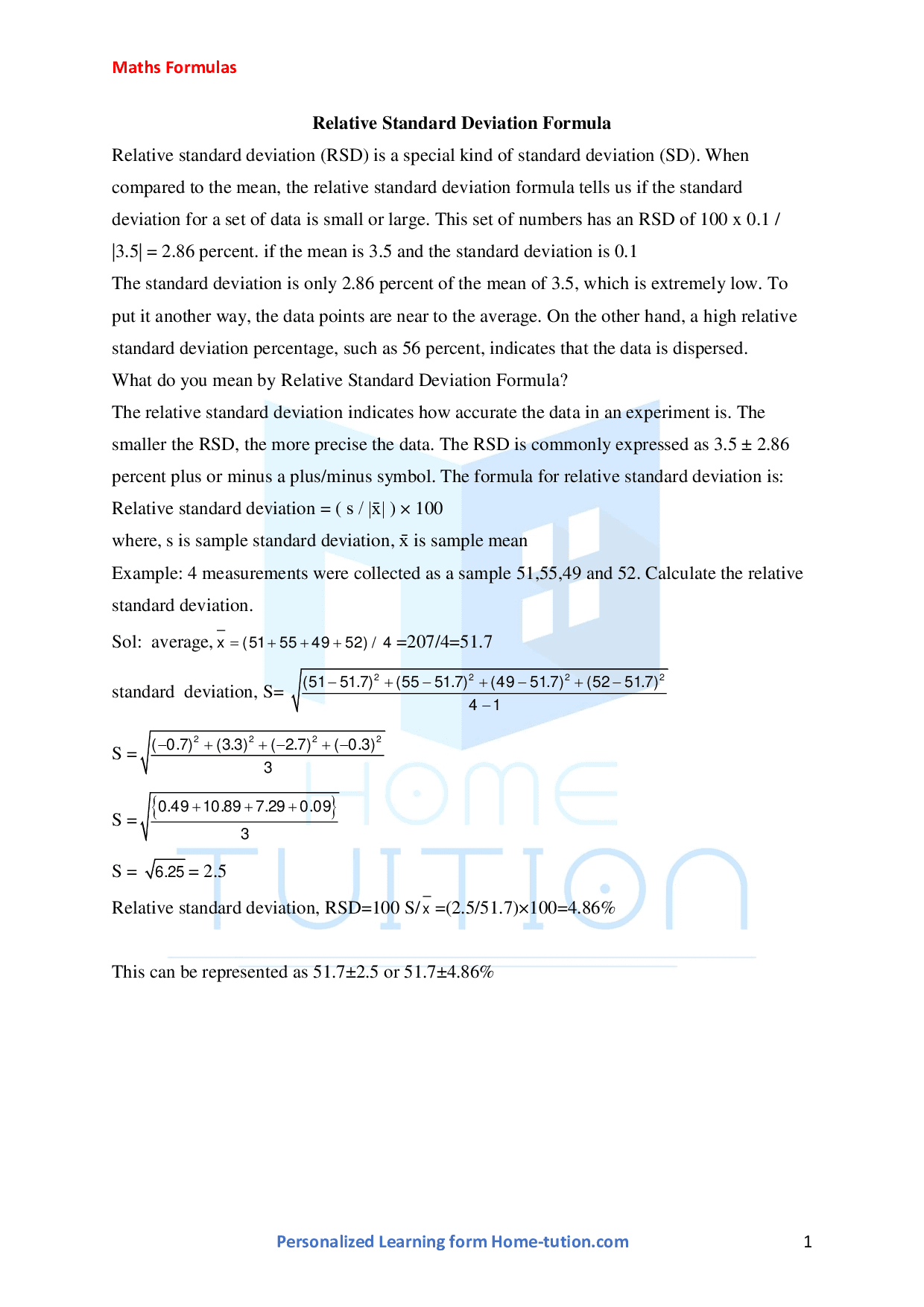Relative Standard Deviation Formula
Relative standard deviation (RSD) is a special kind of standard deviation (SD). When compared to the mean, the relative standard deviation formula tells us if the standard deviation for a set of data is small or large. This set of numbers has an RSD of 100 x 0.1 / |3.5| = 2.86 percent. if the mean is 3.5 and the standard deviation is 0.1
The standard deviation is only 2.86 percent of the mean of 3.5, which is extremely low. To put it another way, the data points are near to the average. On the other hand, a high relative standard deviation percentage, such as 56 percent, indicates that the data is dispersed.
What do you mean by Relative Standard Deviation Formula?
The relative standard deviation indicates how accurate the data in an experiment is. The smaller the RSD, the more precise the data. The RSD is commonly expressed as 3.5 ± 2.86 percent plus or minus a plus/minus symbol. The formula for relative standard deviation is:
Relative standard deviation = ( s / |x?| ) × 100;
where, s is the sample standard deviation, x? is the sample mean
Solved example of Relative Standard Deviation Formula
Example: 4 measurements were collected as a sample 51,55,49 and 52. Calculate the relative standard deviation.
Sol: average, = (51 + 55 +49 +520)/4=207/4=51.7
Relative standard deviation, RSD=100 S/x¯=(2.5/51.7)×100=4.86%
This can be represented as 51.7±2.5 or 51.7±4.86%
